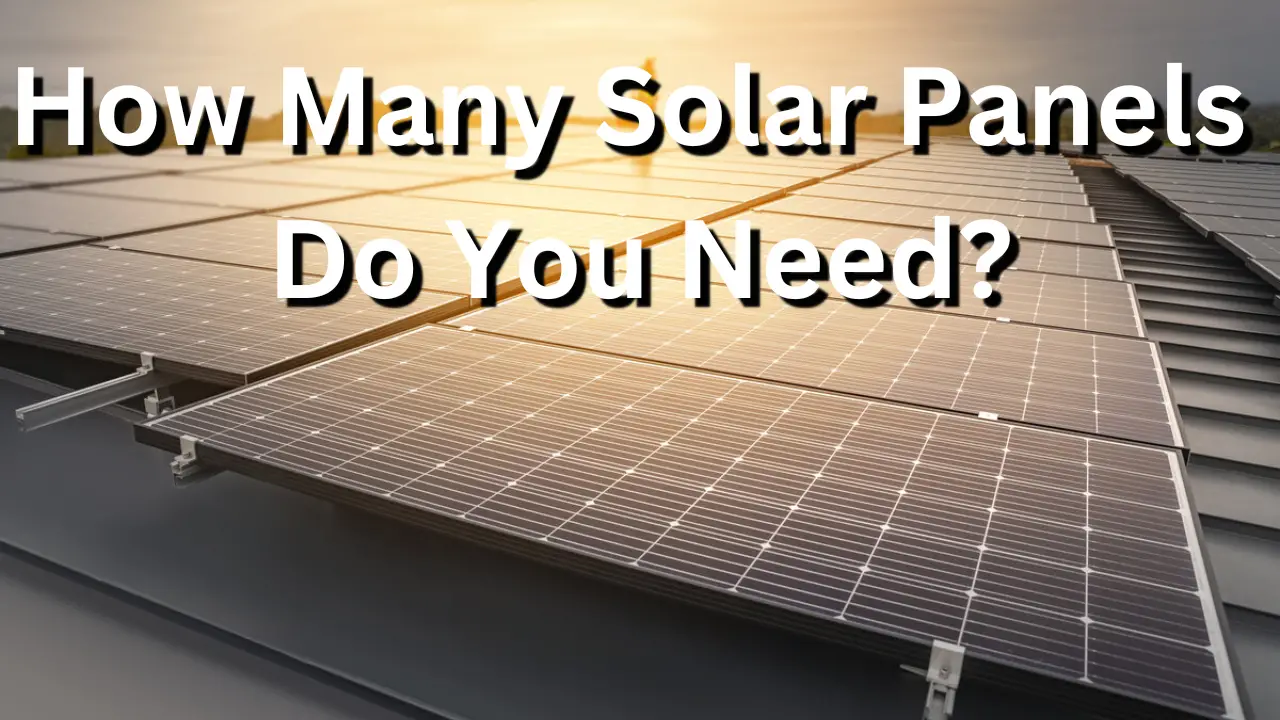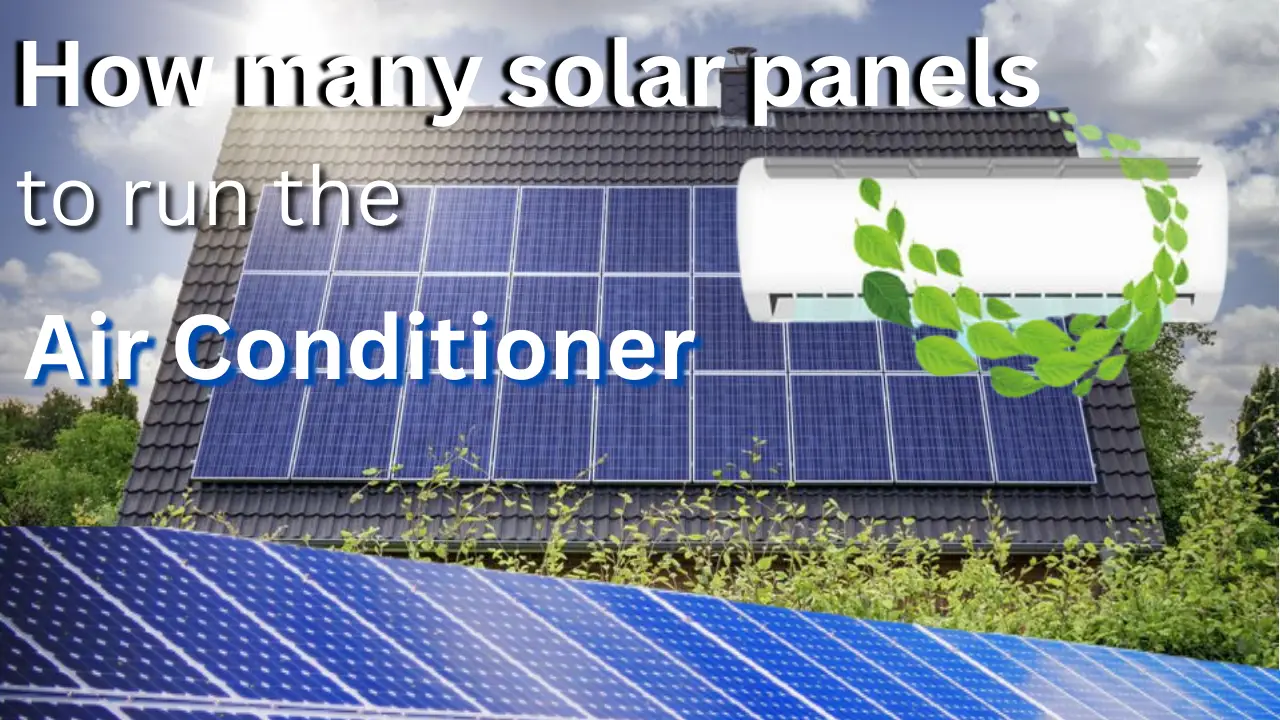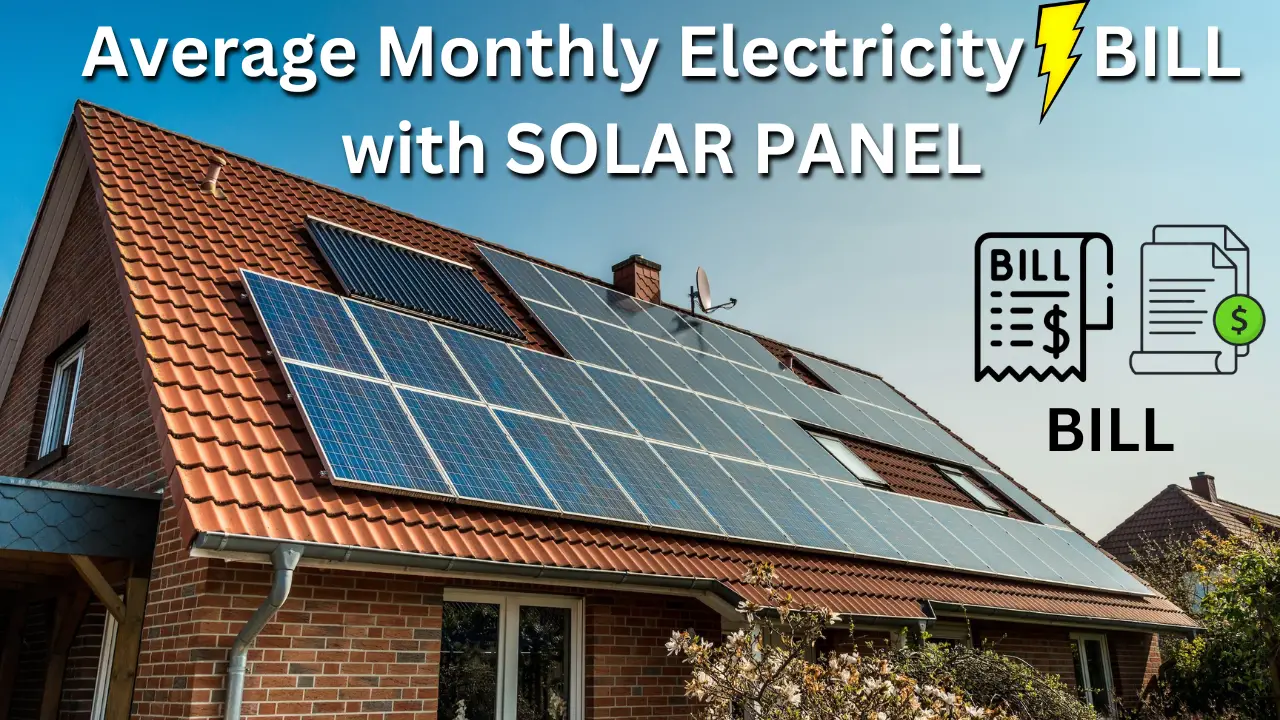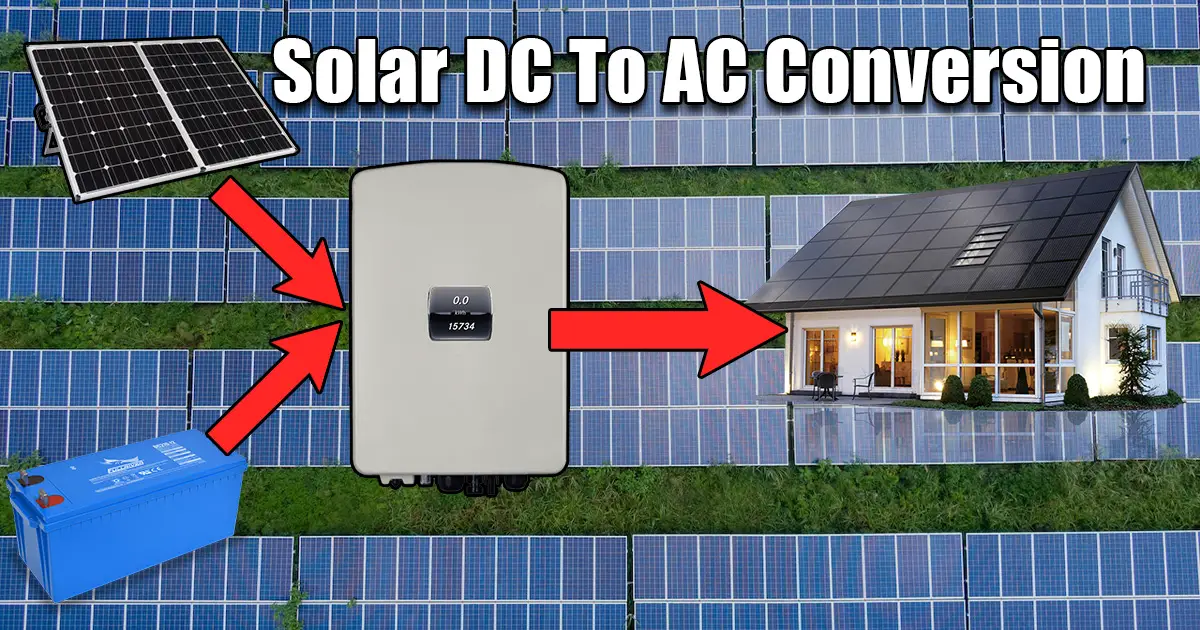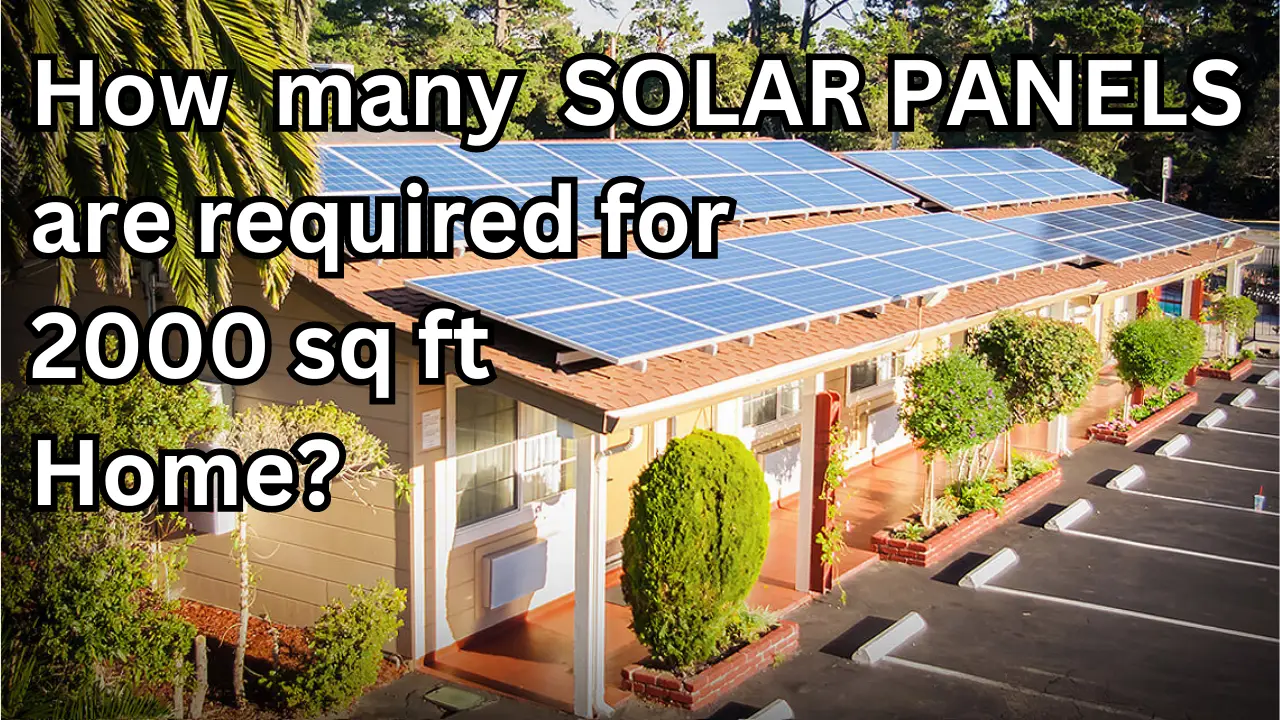Solar power has gained a lot of popularity as a renewable energy source in recent years. It’s a great way to tap into the sun’s energy and offers many advantages, like saving money on electricity bills, reducing carbon emissions, and gaining more energy independence. But figuring out how many solar panels you need for your specific energy needs can feel overwhelming.
This article will examine the elements that influence solar panel sizing and provide you with a helpful, step-by-step guide to help you in deciding the ideal amount of solar panels for your solar system.
What determines how many solar panels you’ll need?
The number of solar panels you’ll need for your home will depend on a variety of factors. Some of these factors include:
1. Understanding Your Energy Consumption
Determining the number of solar panels you will require for your energy needs is primarily dependent on your electricity consumption. Larger homes with more electronic devices and appliances typically require a larger solar panel installation.
To assess your energy usage, it is recommended to review your monthly electricity statement. This statement usually provides information about your energy consumption for the current month, the previous month, and the entire year based on historical data.
It is important to note that relying solely on the energy consumption value of a single month may not be the most accurate approach when sizing your solar panel system. Seasonal shifts often cause considerable year-round variations in energy demand. Therefore, the best estimate for determining the size of your system and the number of solar panels needed should be based on your yearly average consumption.
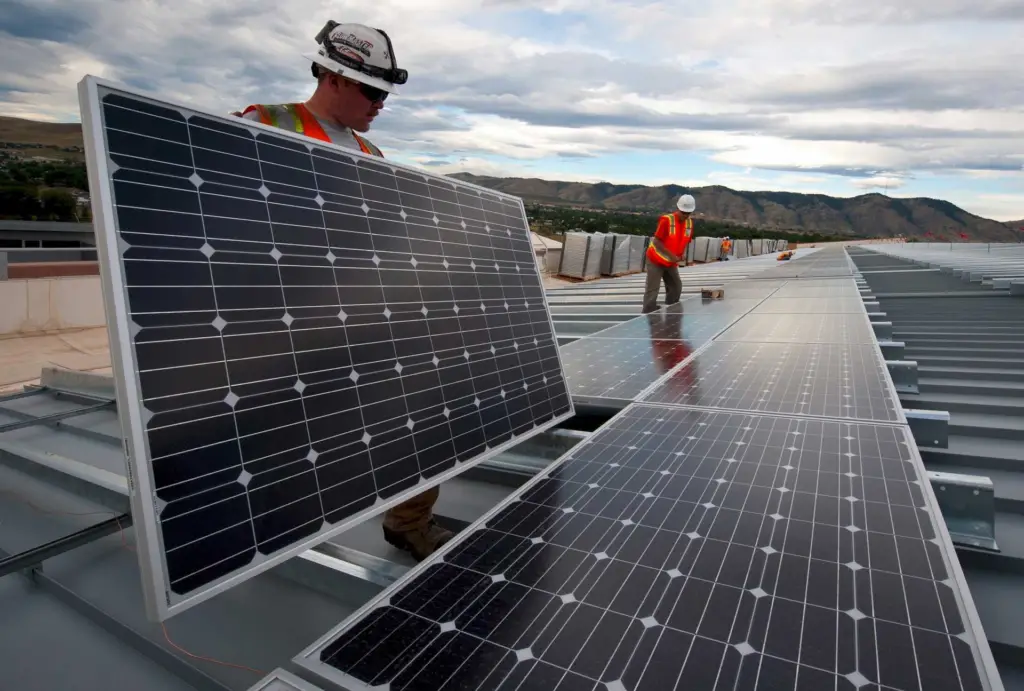
Remember that solar panels don’t always function at their best. Your system’s effectiveness is subject to being impacted by a number of elements, including the weather. Therefore, while evaluating the number of panels required for your solar installation, it’s critical to account for any fluctuations in solar panel output.
You can precisely estimate the number of solar panels required to satisfy your unique energy needs by taking into consideration your yearly energy use and allowing for probable fluctuations in solar panel performance.
2. How Many Sunlight Hours Should You Expect?
Your position affects how much sunshine reaches your solar panels, which affects how much electricity they generate. In order to generate the same amount of power, residences in locations with high solar irradiance—the quantity of sunlight received per square meter—need fewer solar panels than homes in areas with low solar irradiance.
Irradiation of sunlight is the term for the quantity of electromagnetic radiation from the sun that impacts a specific surface per unit area. It is standardly expressed in terms of watts per square meter.
Does Solar Power Work in the Dark or on Cloudy Days?
If you were to reside in Nevada, as opposed to a state with lesser levels of sunshine, like Kentucky, you would experience more peak sunlight hours. This would suggest that you could generate more solar energy than a person in Kentucky with a system of the same size. That doesn’t mean a residence in Kentucky shouldn’t go solar; it just means the owner there would require more solar panels to meet their energy needs.
“A peak sun hour is a period of the day when the average amount of solar energy per square meter (about 10.5 feet) is 1000W. A peak solar hour is 1000 W/m2 of sunlight per hour, to put it another way.”
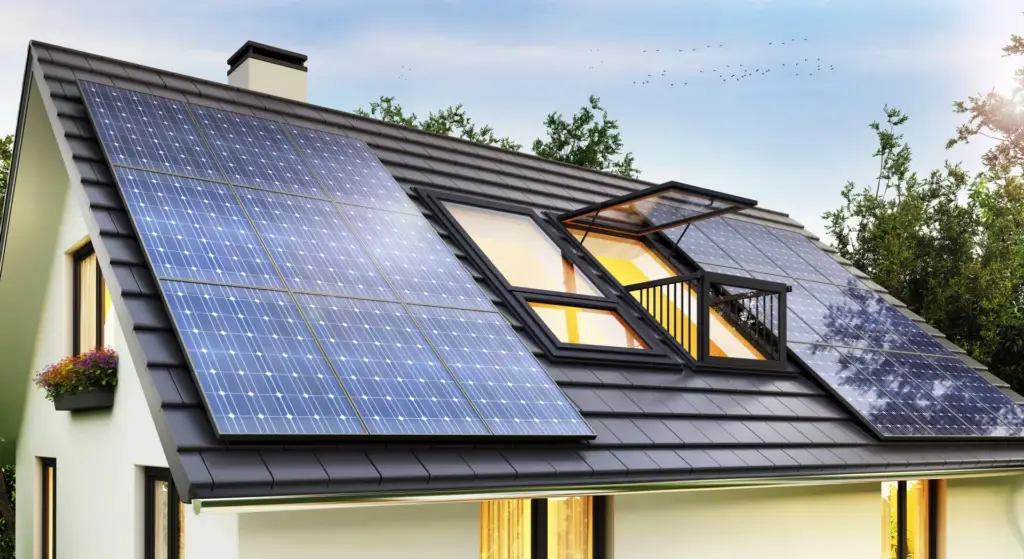
One kilowatt (kW) of solar panels will produce less solar energy in a day in your area, depending on the amount of peak sun hours per day or month there. Therefore, if your state receives five peak sunlight hours each day, 1 kW of the solar system will generate 5 kWh of power daily.
3. The output and efficiency of solar panels
There are variations among solar panels. Given this, your system’s solar panels will have a big impact on how many you need, how long they survive, and how durable they are. Depending on their efficiency, cell type, and panel size, PV solar panels can provide between 150 and 400 watts of power per panel.
Thin-film, monocrystalline, and polycrystalline are the three primary types of PV solar panels. Monocrystalline, the most expensive of the three, offers the highest efficiency (15–20%).
It may be difficult to answer the question “How many solar panels do I need?” for your home, given the wide variances in solar panel quality and efficiency. The simple fact is that more efficient panels will generate more solar energy. Consequently, to produce the same quantity of electricity, you will require less of them.
4. Your panels’ Wattage
Most solar panels have wattages per panel that range from 150 to 400 watts. You will require more panels with lower wattages to produce enough electricity for your home. Naturally, that is assuming that you would want to totally replace all of your present energy needs with solar energy. The difference in solar panel power might not be that significant if you’re only anticipating a partial conversion.
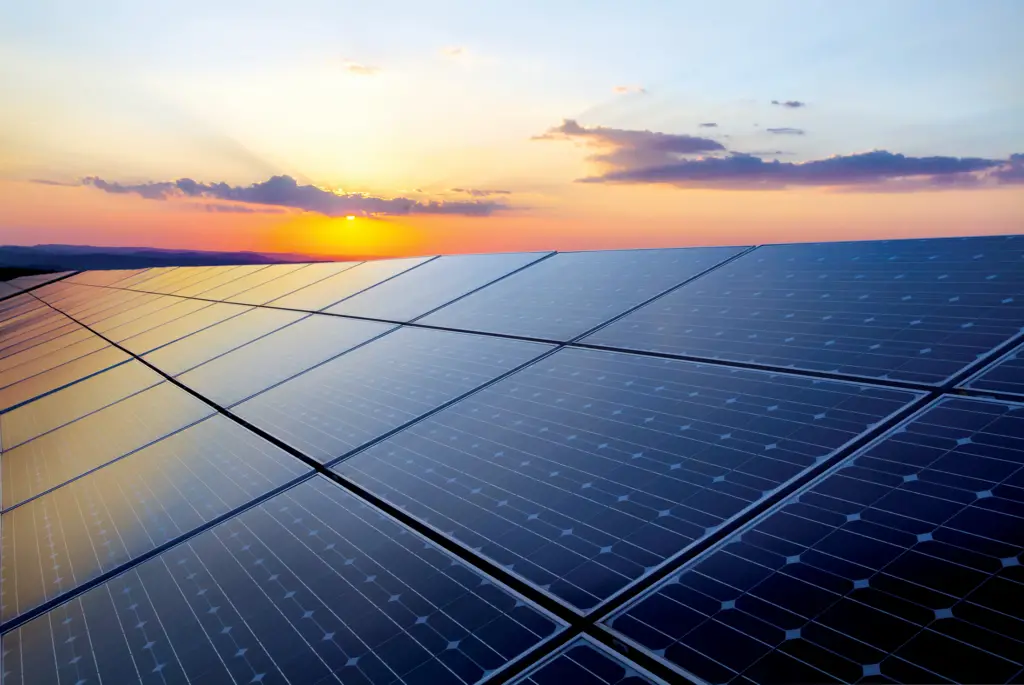
5. Solar panel prices
How much will you be spending on solar panels? Make sure you understand how many will fit within your budget before you purchase.
6. Size of Solar Panel
You must be aware of the standard sizes of solar panels in order to determine how many can be installed on your roof. A home 60-cell solar panel has a surface area of 17.62 square feet (1.63 square meters), whereas a commercial 72-cell solar panel has a surface area of 21.13 square feet (1.96 square meters).
Solar panel installation firms will measure the area of your roof to determine how many panels may be put securely.
Considerations for Panel Placement and Available Space
Besides energy consumption and panel efficiency, the available roof space and panel placement are critical factors in determining the number of solar panels needed. While it’s possible to install solar panels on the ground or other structures, rooftops are the most common location due to their exposure to sunlight.
Evaluate your roof’s orientation and shading. Northern hemisphere roofs facing south receive the greatest sunlight, whereas southern hemisphere roofs facing north are the best. East and west-facing roofs can still generate significant energy, although they might produce less than south-facing ones. Shading from trees, neighboring buildings, or other obstructions can also reduce panel efficiency.
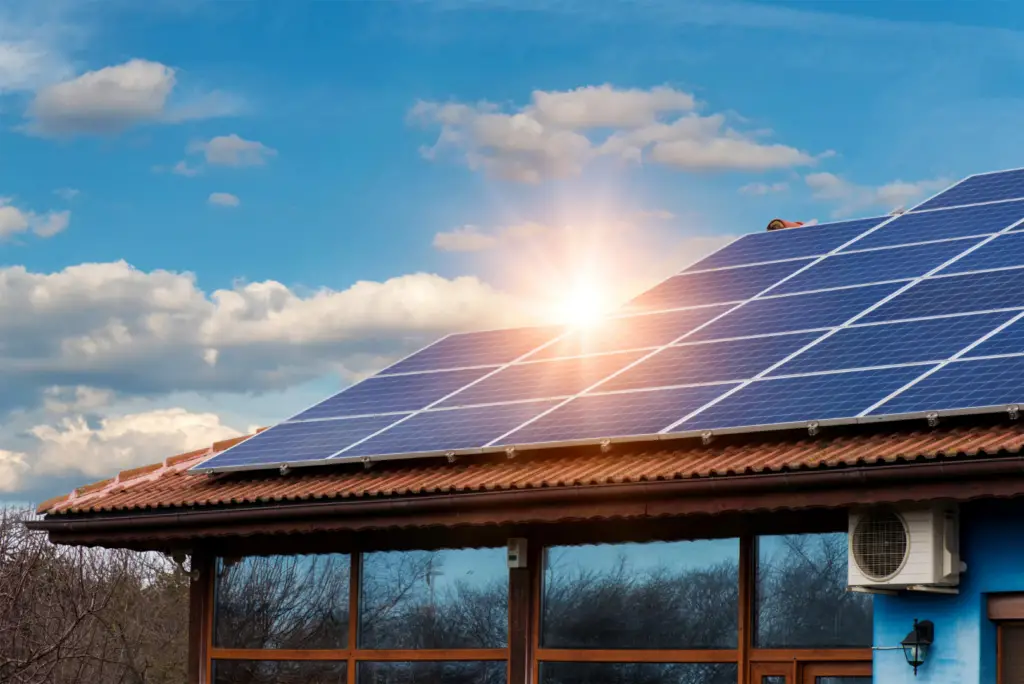
Measure the available roof space to determine the maximum number of suitable solar panels. Consider factors like roof shape, obstructions (e.g., chimneys, vents), and necessary fire safety and maintenance clearances. Though there are alternatives, including smaller or larger options, standard solar panels normally measure around 5.57 feet (1.7 meters) by 3.28 feet (1 meter).
Compare the number of panels needed depending on your energy consumption with the maximum number of panels that will fit on your roof once you have established their maximum capacity. Adjustments might be necessary if space limitations prevent you from installing the exact number of panels needed to meet your total energy requirements.
Additional Factors to Consider
- Battery storage: If you aim to install a solar battery storage system, consider the increased panel capacity required to store excess energy for nighttime or cloudy days.
- Future energy needs: Anticipate any potential changes in energy consumption, such as adding more electrical appliances or an electric vehicle. It’s beneficial to install a solar system with some extra capacity to accommodate future needs.
- Local regulations and incentives: Research local regulations, permits, and incentives available for solar installations in your area. Some regions offer financial incentives or net metering programs that can influence the size and cost of your solar system.
How Many Solar Panels Do I Need? Step-by-step Calculation:
A simple step-by-step calculation can determine the number of solar panels required for your home. Let’s walk through an example to illustrate the process:
Step 1 – Determine your daily energy consumption:
Review your utility bills to determine your average daily energy consumption. For this example, let’s assume your monthly energy consumption is 900 kWh. Divide this by 30 to get your daily energy consumption:
Monthly energy consumption / 30 = daily energy consumption
900 kWh / 30 = 30 kWh
Step 2 – Find Out How Many Peak Hours of Sun Your Area Receives
One of the trickiest aspects of the computation is determining the number of peak sun hours in your region because most individuals have no idea what this term even means, much less what the value is for their state.
You can use the typical amount of peak solar hours in your state or city for this section instead of attempting to value your property in a way that would be very challenging for a layperson to achieve. For the purposes of this example, let’s assume that you reside in a region where the average peak solar hours are four.
Peak Sunlight hours = 4 hours

If you want to find the Peak Sunlight Hours for any place, use the Global Solar Atlas Website. Choosing Texas as the location and setting the data to “Per day,” we will take the number called “Direct normal irradiation” and use it in our next calculations. As you can see:

Step 3 – Calculate the Size of Your Solar Panel System
We must divide the average daily usage by the typical number of daily peak solar hours in your state in order to determine the size of the system.
You’ll need a solar panel system that can produce 30 kWh / 4 hours = 7.5 kW of power during the sun’s peak hours in order to produce 30 kWh of electricity every day.
Daily energy consumption / daily peak sun hours = Energy generated by the system in peak hours daily
30 kWh / 4 hours = 7.5 kW
The efficiency factor, which accounts for energy losses experienced during the transformation of solar energy into electrical energy, must also be taken into consideration in the computation. Assume that, in this instance, the efficiency percentage is 25. However, your solar installer will be better qualified to advise you on what should be important for your situation.
You must divide the required electricity by the output efficiency of your solar panels to account for their efficiency.
Energy Generated daily by system / efficiency of system = Actual Power Needed
7.5 kW / 0.25 = 30 kW
Step 4 – Determine the number of solar panels required:
Divide the size of your solar system by the total Wattage of the solar panels you’ll be utilizing to calculate the necessary number of solar panels. According to the cell technology, efficiency, and panel size, PV solar panels have wattage capacities ranging from around 150 to 400 watts per panel.
Converting kW to W: We will also multiply the fraction by 1000 to convert kilowatts to watts.
30 kW = 30,000 watts
Now assuming each solar panel has a power output of 320 watts. Divide the total power by the power output of a solar panel used in the system to get the required number of solar panels.
Total Power / Power output of a solar panel used = number of solar panels required
30,000 watts / 320 watts = 93.75 (rounded up to 94)
In this example, a home with an average daily energy consumption of 30 kWh, four peak sun hours, and a system efficiency of 25% would require approximately 94 solar panels, assuming each panel has a power output of 320 watts.

It’s important to note that these calculations provide a general estimate, and actual requirements may vary based on factors such as panel efficiency, local weather conditions, shading, and specific energy needs. Consulting with a solar professional can provide a more accurate assessment of your specific situation.
If you find these calculations hard to apply, then don’t worry; our free calculator is easy to use:
Conclusion
One of the most important steps in switching to solar energy is finding out how many solar panels are required for your solar system. By understanding your energy consumption, considering panel efficiency and output, and assessing available roof space, you can accurately size your solar system to meet your electricity needs.
To get an accurate assessment and to benefit from their experience in building and installing a solar power system adapted to your particular requirements, remember to contact with a professional solar installation. Adopting solar energy is a wise decision for a sustainable future because it offers both financial and environmental advantages.

